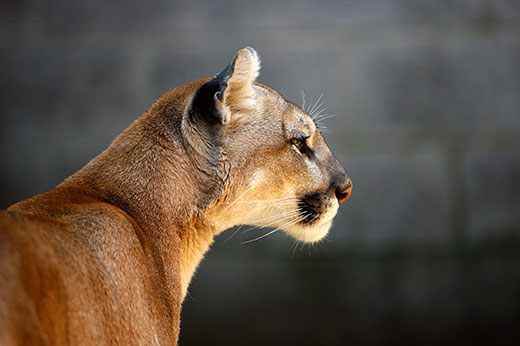
Sightings of mountain lions in Kansas are rare, but are known to happen. Young lions generally pass through the Sunflower State while looking for habitat and a mate.
Lions in Kansas? It’s possible, but rare, says K-State wildlife expert
Sightings may have increased the past 15 years
March 31, 2023
By Pat Melgares, K-State Research and Extension news service
MANHATTAN, Kan. – In Kansas, the chances of seeing a lion in the wild have greatly increased over the past decade and a half, according to Kansas State University wildlife specialist Drew Ricketts.
In fact, in 2020 there were 15 confirmed sightings of a mountain lion in the Sunflower State. That number, though, is deceptive.
“During that year, based on the distribution and timing of pictures in Kansas, we think we had three cats moving through the state,” Ricketts said. “Most of those 15 pictures would have been of one of those three cats.”
Kansas wildlife officials said the first official confirmed sighting of a mountain lion in recent times took place in 2007. Since that time, Ricketts said state officials have confirmed approximately 50 sightings of mountain lions.
“We have to confirm these sightings based on strong evidence,” Ricketts said. “That includes a track, hair or a picture that is reported to a wildlife official, who then confirms the sighting.”
Prior to Europeans settling the Kansas Plains, Ricketts said mountain lions, gray wolves, black bears and even grizzly bears roamed the area.
“All of these predators were seen as a barrier to agricultural production, and more specifically to producing cattle and sheep on rangelands,” Ricketts said.
“So, around the turn of the century (1900) on up to World War II, there were some pretty intense predator control programs throughout the Plains and the west. Mountain lions were one of those species that were eradicated.”
According to Ricketts, the lions spotted in Kansas more recently are likely just passing through.
“They are mostly coming from the north and west, and when they come into the northern part of Kansas, they tend to move through along the big drainages,” he said. “So, they move along the Republican River or Cottonwood River or the Smoky Hill River; they are often moving from northwest to east and then coming down through the Flint Hills toward the southeast part of Kansas.”
He notes that sightings of mountain lions in Kansas can be dependent on a successful breeding season in the Black Hills of South Dakota.
“These are typically younger mountain lions that are getting kicked out of mom’s home range, and then they go looking for good habitat with another mountain lion that could be a potential mate,” Ricketts said. “They’re not finding another mountain lion in Kansas because we don’t have a breeding population here. So, we get these transient individuals that are moving through.”
Ricketts said it is “extremely unlikely” for residents to experience an aggressive encounter with a mountain lion, though they should not engage in contact. Sightings should be reported to local wildlife officials.
More information on managing wildlife is available online from K-State’s Department of Horticulture and Natural Resources.

